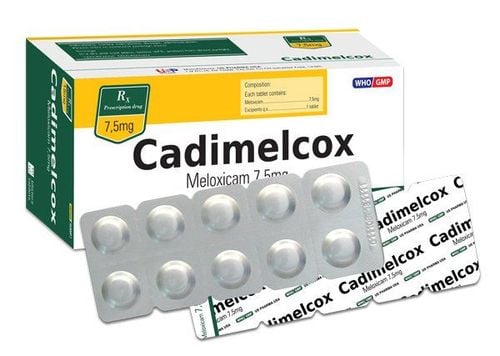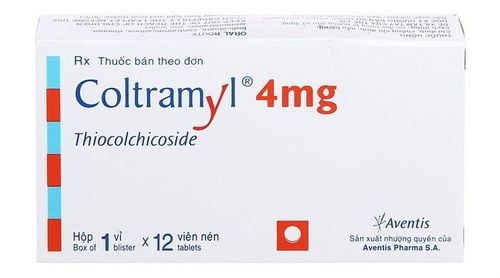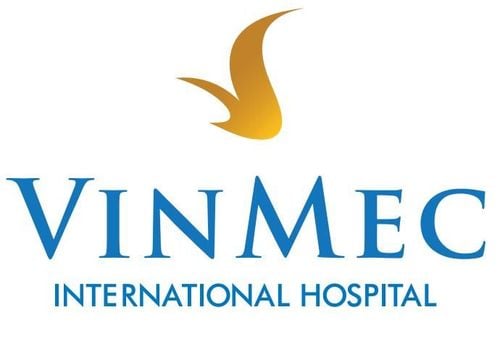This is an automatically translated article.
Intercostal neuralgia is a common disease caused by many causes such as: incorrect posture, trauma, infection, toxicity,... Sometimes, intercostal neuralgia has no known cause. The cause is called primary intercostal neuralgia.1. Intercostal neuralgia
Intercostal neuralgia is a common pathological syndrome today, caused by many causes.
The intercostal nerves include nerves that arise from the D1-D12 thoracic spinal cord. After passing through the graft hole, the thoracic medullary nerve root divides into two branches:
Anterior branch: also known as the abdominal branch, which supplies the skin and muscles in front of the abdomen and chest. Fast posterior: also known as the dorsal branch that governs the skin and back muscles. The intercostal nerve, together with the capillaries, forms a bundle, the intercostal nerve is located below the costal margin of each rib, after separating from the common root. Therefore, when there is injury or disease of the spinal cord, the ribs, spine and chest wall all directly affect the intercostal nerve. The intercostal nerves are also shallow nerves, so they are easily affected by external factors.
Symptoms of intercostal neuralgia are persistent or intermittent pain along the intercostal nerve, chest pain, pain in the ribs. Patients usually only have pain on one side, pain from the chest spreading along the ribs to the back next to the spine.
Intercostal neuralgia often occurs when there are infectious diseases such as tuberculosis, influenza, rheumatism, diseases of the lungs, pleura, liver, heart,...

Đau tức ngực là dấu hiệu của bệnh đau thần kinh liên sườn
2. Causes of intercostal neuralgia
There are many causes of intercostal neuralgia such as:
Spondylolisthesis: The pain is dull, non-acute and accompanied by dull pain in the thoracic spine when moving and even at rest. Common in the elderly, pressing on the sides of the spine on both sides, the patient feels light and comfortable. Spinal cord disease: Intercostal neuralgia is often an early symptom of radiculopathy and extramedullary tumors. The patient feels pain on one side, clearly localized, belt-like pain on one side. Infection: Common in the intercostal nerve due to shingles with symptoms in 2 stages: the acute phase usually starts with pain. burn a rib. A day or two later, blisters appear, tend to spread. Patients feel itching and burning pain, discomfort when rubbing. Some other causes such as: spinal cord injury, poisoning, diabetes, spinal tuberculosis, spinal cancer, polyneuritis rarely damage the intercostal nerve,... In addition, one In some cases of unknown cause, intercostal neuralgia is called primary intercostal neuralgia: the patient may have unilateral or bilateral pain in the paraspinal or intervertebral-shoulder region, pain spreading along the intercostal space. out front. Characteristic of dull pain, pain when taking deep breaths and changing positions, sneezing, coughing. Often misdiagnosed with lung diseases.
3. Diagnosis of intercostal neuralgia
Intercostal neuralgia is often misdiagnosed with diseases of the lungs and heart. Therefore, the doctor needs to perform a clinical examination to make a differential diagnosis. In addition, the patient needs to do some more paraclinical tests, including:
Routine X-ray: evaluate the morphology of the spine, vertebrae to find out the cause of the disease such as spondylosis, tuberculosis spine Magnetic resonance imaging: accurately diagnose the cause of diseases such as diseases of the spine, discs and spinal cord such as degeneration, protrusion and herniated discs, spinal tumors and spinal cord diseases, trauma spine, inflammation such as spondylitis, infectious disc disease, spinal tuberculosis Basic tests: peripheral blood cell test, erythrocyte sedimentation rate, complete urinalysis. Blood biochemical tests: urea, creatinine, AST, ALT.

Người bệnh có thể được chỉ định chụp X - quang để chẩn đoán bệnh đau thần kinh liên sườn
4. Treatment of intercostal neuralgia
The doctor will prioritize the patient's pain first, then treat the cause. Some groups of drugs to treat neuralgia such as:Common pain relievers such as paracetamol, diclofenac... For people with a history of liver and kidney disease, caution should be taken when using paracetamol. For people with a history of peptic ulcers - do not use diclofelac. The drug is taken after meals, divided into 2-3 times a day. Neuropathic pain medication: The gabapentin group, which is essentially an anticonvulsant, has been found to have an analgesic effect in cases of nerve root and nerve damage. Because of the effect on the central nervous system, in some cases, patients feel dizzy and lightheaded after taking the drug. Usually small doses, gradually increased until effective, should be taken before bedtime or lunch break, can be used for several months. Skeletal muscle relaxants: Myonal, mydocalm... are only used for severe pain, feeling of contraction in the damaged flank, with low doses. Use after meals, with caution when using for people with gastroduodenal disease, the elderly and children due to weak musculoskeletal system. Do not use rhabdomyolysis in patients with myasthenia gravis. B vitamins: B1, B6, B12 are vitamins that play an important role in the metabolism of cells in general, especially nerve cells and myelin sheaths. In addition, the doctor will coordinate treatment according to the cause. Patients should avoid movement in the wrong posture or too strong. Prevention of occupational accidents, traffic accidents and daily activities.
Intercostal neuralgia is a symptom of many diseases, requiring early detection of symptoms and aggressive treatment of diseases. When you see symptoms of flank pain, or other unusual signs, you should immediately go to a medical facility for timely examination and treatment.
Vinmec International General Hospital is one of the hospitals that not only ensures professional quality with a team of leading medical doctors, modern equipment and technology, but also stands out for its examination and consultation services. comprehensive and professional medical consultation and treatment; civilized, polite, safe and sterile medical examination and treatment space.
Customers can directly go to Vinmec Health system nationwide to visit or contact the hotline here for support.
MORE:
Diagnosis and treatment of intercostal neuralgia Pain in the right lower quadrant is a manifestation of what disease? Costochondritis: What you need to know













